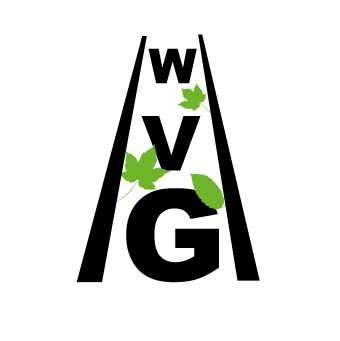History of the Wye Valley Railway
Railcars
Diesel railcars were in regular use on the Wye Valley Railway in the 1930s to the 1950s working alongside steam engines. A parcels railcar service was introduced in the 1930s.The following three paragraphs are based on an article in the Railway Magazine December 1933.
In 1933 a new design of diesel railcar was completed by Hardy Motors limited of Southall with the intention of being introduced into service by the GWR. It was powered by a bus engine of the type used on certain London buses.
The streamlined body was evolved as a result of wind tunnel tests. In addition to the specially shaped ends, the sides of the body were brought down to within a foot of the track. It was claimed that at high speeds the air resistance is only one-fifth of that of a square ended car. The car could be driven from either end from cabs that give a wide visibility.
Entrance to the car was in the middle through doubled doors. The seats were upholstered with leather covered Dunlopillo cellular rubber cushions. The interior was decorated in brown and green Rexine, with woodwork in walnut, and the floor covered with insulation.
The first 17 were built as single units without buffers. Initially they operated on local routes in the Thames Valley.
The First of the new 260b.h.p.A.E.C. diesel-mechanical railcars for the Great Western Railway
(Railway magazine August 1934)
Railcar buffet bar
(Swindon STEAM picture library)
On 6 July 1934 Britain’s first regular long distance fast railcar service started between Cardiff and Birmingham. A buffet bar emphasised the quality of service being offered. The service was intended for businessmen with a premium of 2s 6d (12 1/2p) above the ordinary fare. The maximum design speed was 80 mph.(Railway magazine August 1934)
The railcars became known as the ‘flying bananas’ on account of their shape.
Two streamlined icons together line up alongside. Duchess of Hamilton and Railcar W4W at the National Railway Museum York
(R Moxon)
Jubilee LNER poster
(Science museum group collection CC Non- commercial SA 4.0)
The London and North Eastern Railway published an advertising poster in 1935 (above) with the claim that ‘The Silver Jubilee (hauled by a Class A4 locomotive) is Britain’s First Streamline Train’ with the date of the first service as 30 September 1935. Does this conflict with the Railway Magazine article of August 1934 citing 6 July 1934 as the first regular long distance streamlined railcar service? Perhaps the LNER would have argued that they were talking about a ‘streamlined train’ which was described in this way in the timetable whereas the railcar Cardiff-Birmingham service was given no such special designation – a fine point.
GWR Diesel Railcar Services 1936
A total of 38 railcars were produced for the GWR. The first 18 were of the streamlined variety. The rest were built with a more angular shape to increase luggage capacity. Some were single car units. Others operated as twin-sets. Some were fitted with a buffet bar. Others used the space for additional seating. A small number were configured for parcel traffic.
The GWR introduced railcars over a wide range of route types from high-speed express to local request stop services such the Wye Valley Railway. The first railcar to run on the WVR was W30W which was assigned to the Wye Valley branch in the early part of 1941.
A single railcar could operate over 10 passenger services a day starting from Newport totalling around 250 miles. The majority of services were from Monmouth (Troy) to Chepstow and return.
Angular shape diesel railcar W23W at Tintern
(Great Western Trust)
W22W preserved at Didcot Railway Centre
(Hugh Llewelyn CC BY-SA 2.0)
W22W interior preserved at Didcot Railway Centre
(Hugh Llewelyn CC BY-SA 2.0)
John Wheeler, Redbrook station master, provided this memory of the railcars :
‘There were only a few minor mishaps during John’s time on the branch. Sometimes a wagon would derail in station sidings and occasionally problems occurred with the diesel railcars that were introduced to the passenger service – they were a very popular ride for the passengers and were known as the ‘Elver Expresses’. One was No. 13 and the other was No. 4, you would have expected that No. 13 would be the problem one but not so. No.4 was an old express car that operated on the Cardiff to Cheltenham service that went through Chepstow about 11.35 am. It was designed as an express unit and had a second engine that cut-in only when a certain speed was reached. With all the branch stops on the Wye Valley Railway, the cut-in speed was never achieved, consequently the fly-wheel on the first engine overheated and the diesel often had to be rescued by one of the tank engines working the quarry trains.’
Reproduced with kind permission from ‘The Wye Valley Railway and the Coleford Branch’ by B M Handley and R Dingwall








